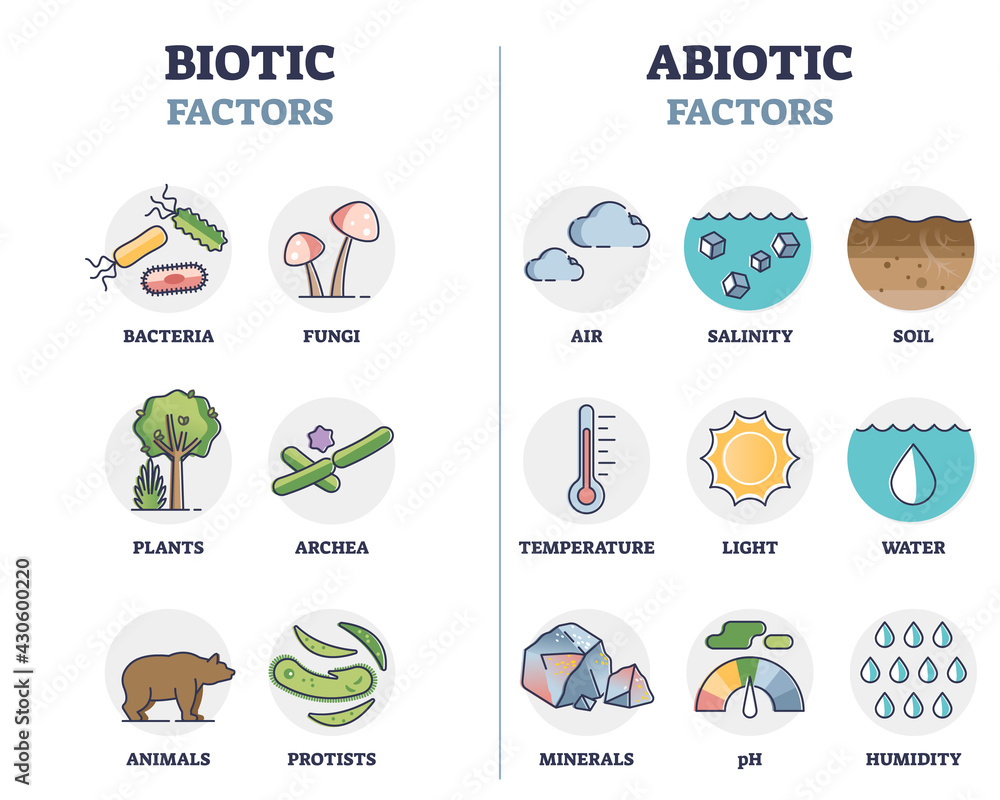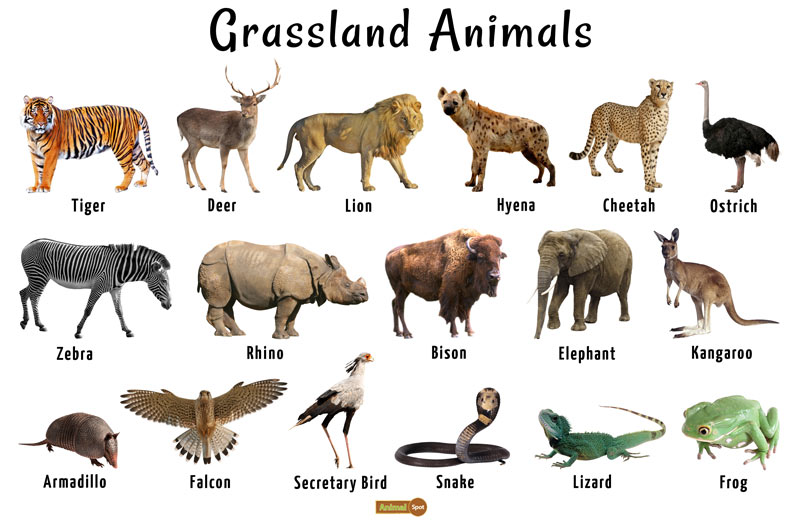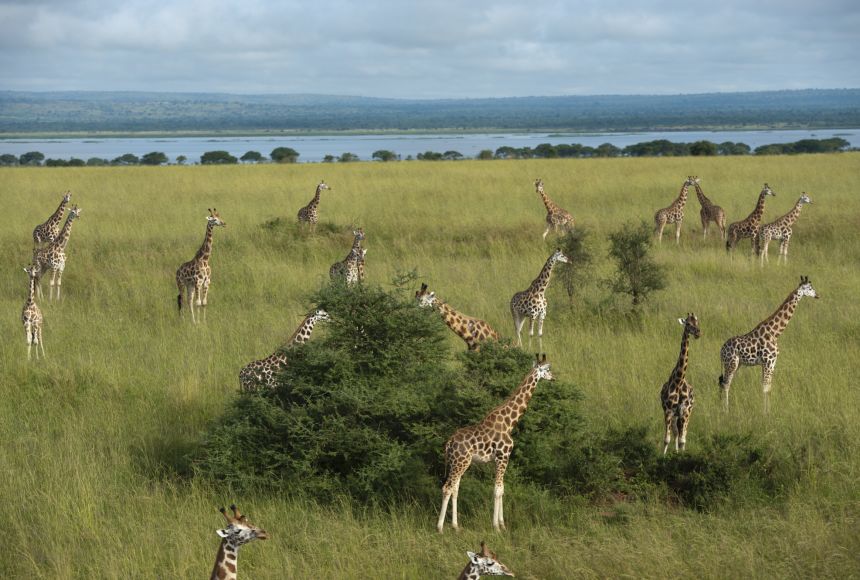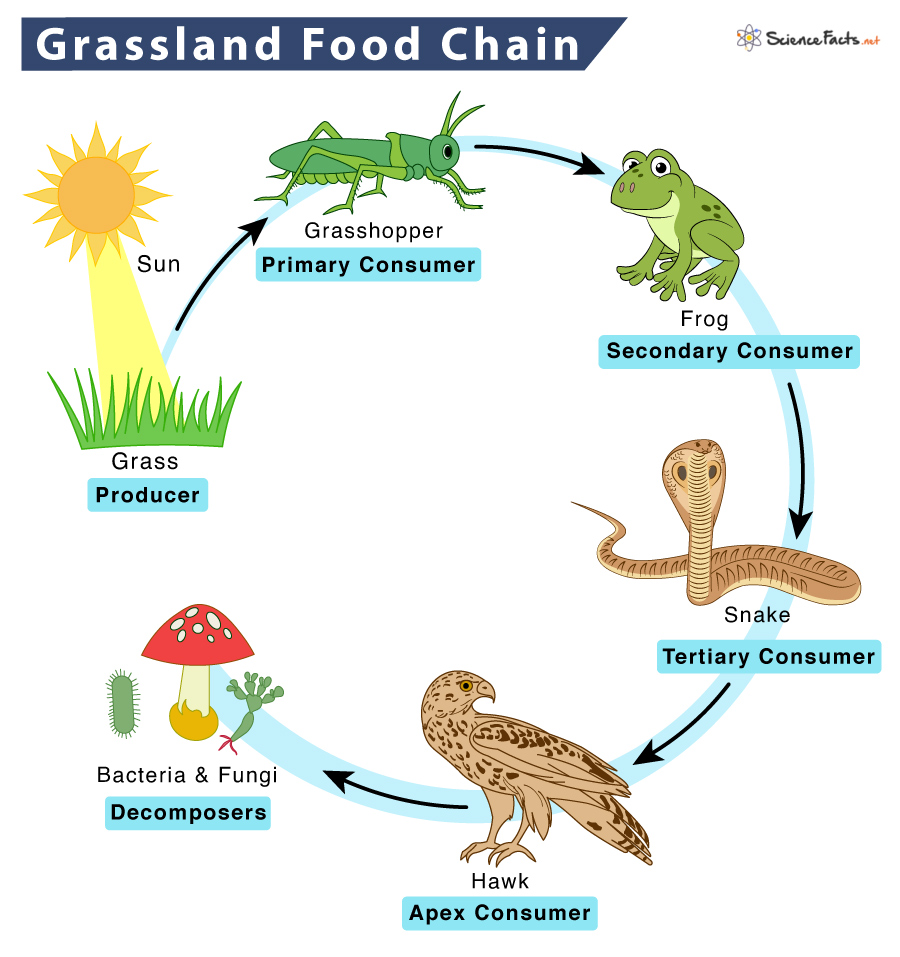Topic abiotic factors in the marine ecosystem: Explore the pivotal role of abiotic factors in the marine ecosystem, driving the diversity and vitality of oceanic life across the globe.
Table of Content
- What are the abiotic factors in the marine ecosystem?
- Overview of Abiotic Factors
- Temperature and Light Availability
- Salinity Levels
- Oxygen Concentration
- YOUTUBE: Abiotic Factors in Ecosystems: Water
- Water Movement and Currents
- Depth and Pressure
- Nutrient Availability
- pH Levels and Chemical Composition
- Impact of Abiotic Factors on Marine Biodiversity
- Role in Marine Ecosystem Health and Productivity
What are the abiotic factors in the marine ecosystem?
Abiotic factors refer to the non-living components of an ecosystem that have a significant impact on the organisms living within it. In the case of a marine ecosystem, the abiotic factors can include:
- Temperature: The temperature of the water plays a crucial role in determining the distribution and survival of marine organisms. Some organisms thrive in warm waters, while others prefer colder temperatures.
- Sunlight: Sunlight is essential for photosynthesis, which is the process by which marine plants and algae produce their food. The availability of sunlight determines the depth to which photosynthesis can occur and impacts the distribution of marine life.
- Salinity: The salt content, or salinity, of the water affects the osmoregulation and tolerance levels of marine organisms. Different species have varying tolerances to high or low salinity levels.
- Oxygen levels: Dissolved oxygen is crucial for the survival of marine organisms, including fish and invertebrates. Oxygen levels can vary based on factors such as temperature, depth, and water movement.
- pH level: The pH level of the water affects the chemical reactions that occur within marine organisms. Some species can tolerate a wide range of pH levels, while others require more specific conditions.
- Nutrient availability: Nutrients, such as nitrogen and phosphorus, are essential for the growth and productivity of marine plants and algae. The availability of these nutrients in the water can influence the abundance and diversity of marine life.
- Water movement: The movement of water, including tides, currents, and waves, influences the dispersal of organisms, the delivery of nutrients, and the availability of food.
- Depth: The depth of the water affects factors such as temperature, light, and pressure, creating distinct habitats and limiting the distribution of certain organisms.
These abiotic factors interact with each other and with the biotic (living) components of the marine ecosystem to create a dynamic and complex environment.
READ MORE:
Overview of Abiotic Factors
Abiotic factors are the non-living components that play a key role in shaping the marine ecosystem. These elements directly influence the survival, behavior, and distribution of aquatic organisms. Understanding these factors is crucial for appreciating how life thrives in the ocean"s unique environments.
- Temperature: Regulates the metabolic rates of marine organisms and affects their geographic distribution.
- Light: Essential for photosynthesis, affecting the depth at which plant life can grow and the availability of energy throughout the ecosystem.
- Salinity: Influences the osmoregulation processes of marine species and determines the species composition in different marine habitats.
- Oxygen: Vital for respiration, its concentration in water impacts the diversity and density of life forms.
- Water Movement: Includes currents, tides, and waves, shaping the physical environment and affecting nutrient distribution.
- Depth and Pressure: Affect the types of species that can inhabit different zones of the ocean, with pressure increasing and light decreasing with depth.
- Nutrient Availability: Determines the productivity of marine ecosystems, influencing the distribution of plant and animal species.
- pH Levels: Can affect the biological functions of marine organisms, with certain species more tolerant to variations than others.
These abiotic factors interact in complex ways to create the diverse habitats found within the marine ecosystem, from sunlit shallow waters to the dark depths of the ocean trenches.

Temperature and Light Availability
Temperature and light are fundamental abiotic factors that significantly influence marine ecosystems. These elements not only determine the physical conditions of the habitat but also directly affect the biological processes of marine organisms.
- Temperature: Varies with depth, latitude, and season, playing a critical role in determining the types of species that can survive in different parts of the ocean. Warmer waters near the equator support diverse coral reefs, while colder regions are home to species adapted to frigid temperatures.
- Light Availability: Decreases with depth, limiting photosynthesis to the upper layers of the ocean, known as the photic zone. Beyond this zone, in the aphotic zone, life must adapt to darkness, relying on other sources of energy.
Together, temperature and light availability shape the vertical stratification of the ocean, creating distinct habitats ranging from warm, illuminated surface waters to the cold, dark depths. These factors influence the distribution of phytoplankton, which are the primary producers in the marine food web, and thus have a cascading effect on the entire ecosystem.
- Thermal Stratification: Creates layers within the ocean where temperature gradients affect water density and circulation, impacting nutrient mixing and the distribution of marine life.
- Seasonal Variations: Affect light and temperature levels, leading to seasonal changes in productivity and species behavior, such as migration patterns and breeding cycles.
The interplay between temperature and light availability is vital for the health and productivity of marine ecosystems, influencing everything from primary production to species diversity.
Salinity Levels
Salinity, the concentration of salt in water, is a critical abiotic factor that influences the marine ecosystem. It affects the osmotic balance of marine organisms, shaping species distribution and community composition across different marine environments.
- Coastal and Estuarine Salinity: Fluctuates due to freshwater input from rivers, affecting the biodiversity of estuaries and coastal waters. Organisms in these areas are often euryhaline, capable of tolerating a wide range of salinities.
- Open Ocean Salinity: More stable compared to coastal areas, but still varies with depth, evaporation rates, and freshwater inputs from precipitation and ice melt. Organisms here are generally stenohaline, requiring or tolerating a narrow range of salinity.
Salinity levels also play a role in water density and circulation, influencing global ocean currents. These currents transport heat, nutrients, and marine life, connecting different parts of the marine ecosystem.
- Salinity Gradients: Create unique habitats, such as brackish water environments, where the mix of fresh and saltwater offers niche ecosystems for specialized species.
- Adaptation to Salinity: Marine species exhibit various physiological adaptations to manage salinity changes, crucial for survival in fluctuating environments.
Understanding salinity"s role is essential for conserving marine biodiversity, as changes in salinity can impact marine habitats, species distributions, and the overall health of marine ecosystems.

Oxygen Concentration
Oxygen concentration in water is a pivotal abiotic factor for marine ecosystems, crucial for the survival of aerobic marine organisms. It varies with temperature, salinity, depth, and the presence of plant life, significantly affecting marine biodiversity and distribution.
- Surface Water Oxygenation: Higher in the surface layers where photosynthesis by phytoplankton and diffusion from the atmosphere occur, supporting a diverse range of life forms.
- Oxygen Minimum Zones (OMZs): Occur at mid-depths where oxygen consumption exceeds its supply, challenging habitats for marine life, yet some species have adapted to these low-oxygen conditions.
Oxygen levels influence water density and circulation patterns, affecting the global distribution of marine ecosystems. Changes in oxygen concentration can lead to shifts in species distribution and ecosystem dynamics.
- Impact of Temperature: Warmer water holds less oxygen, which can stress marine life, particularly in areas experiencing rapid temperature increases.
- Role of Currents: Ocean currents circulate oxygen-rich water, helping to ventilate deeper layers and sustain life in the ocean"s depths.
- Adaptations to Oxygen Levels: Marine organisms exhibit a range of adaptations to varying oxygen concentrations, from behavioral changes to physiological modifications.
The monitoring and understanding of oxygen concentrations are essential for predicting the impacts of climate change on marine ecosystems and for the conservation of marine biodiversity.
Abiotic Factors in Ecosystems: Water
Dive into the mesmerizing world of water as you embark on a visual journey through stunning landscapes, from rushing waterfalls to serene lakes, in this captivating video that will refresh your senses and leave you in awe.
Biotic and Abiotic Factors in Marine Ecosystems
Explore the fascinating wonders of the marine realm in this breathtaking video that takes you on an underwater adventure like no other. Discover the vibrant coral reefs, graceful marine creatures, and the secrets hidden beneath the ocean\'s surface, reminding us of the beauty and importance of our oceans.
Water Movement and Currents
Water movement and currents are essential abiotic factors in the marine ecosystem, driving the distribution of nutrients, temperature, and organisms throughout the ocean. These dynamic forces shape marine habitats, influence weather patterns, and affect global climate systems.
- Surface Currents: Generated by wind patterns and the Earth"s rotation, surface currents regulate climate by distributing heat from the equator towards the poles, supporting diverse marine life by transporting nutrients.
- Deep Ocean Currents: Driven by differences in water density, influenced by temperature and salinity, these currents circulate water globally, playing a key role in nutrient and oxygen distribution deep below the surface.
- Tides and Waves: Caused by gravitational forces from the moon and sun, and by wind respectively, tides and waves affect coastal ecosystems by influencing erosion, sediment deposition, and the intertidal zone"s habitat dynamics.
These movements also facilitate larval dispersal and migration of marine species, ensuring genetic diversity and the spread of life across vast oceanic distances.
- Impact on Marine Life: Currents and water movement can carry planktonic organisms and nutrients, supporting food webs from the surface to the deep sea.
- Climate Interaction: Ocean currents play a critical role in regulating the Earth"s climate by influencing weather patterns and global heat distribution.
- Ecosystem Health: Healthy water movement is vital for sustaining marine ecosystems, affecting coral reef growth, fish populations, and the overall productivity of the marine environment.
Understanding water movement and currents is crucial for marine conservation efforts, fisheries management, and predicting the impacts of climate change on marine biodiversity.

Depth and Pressure
Depth and pressure are integral abiotic factors in the marine ecosystem, profoundly affecting the physical environment and the life forms that inhabit it. As depth increases, light diminishes, temperatures change, and pressure increases, each factor influencing marine biodiversity in unique ways.
- Increasing Pressure: For every 10 meters of depth, the pressure increases by approximately one atmosphere. This significant increase in pressure with depth affects the physiology and physical structure of marine organisms, leading to unique adaptations among deep-sea life forms.
- Light Penetration: Light penetration decreases with depth, limiting photosynthesis to the euphotic zone, the upper layer of the ocean. Below this layer, in the aphotic zone, organisms must adapt to complete darkness, relying on chemosynthesis or predation for energy.
- Temperature Gradients: Temperature decreases with depth in the ocean, creating distinct thermal layers that influence the distribution of marine life. The thermocline, where the temperature rapidly changes, acts as a barrier to some species, affecting vertical distribution.
These conditions create a range of habitats, from shallow, sunlit waters teeming with life to the dark, high-pressure environments of the deep sea, home to some of the most extreme and specialized organisms on Earth.
- Adaptations to High Pressure: Deep-sea organisms exhibit adaptations such as flexible membranes and specialized enzymes to withstand high pressure and low temperatures.
- Impact on Marine Ecosystems: Depth and pressure influence the types of habitats available, the species that can inhabit them, and the ecological roles these species play.
- Exploration and Research: Advances in technology are revealing the mysteries of deep-sea environments, offering new insights into biodiversity and the adaptations of life under extreme pressure and depth.
Understanding the effects of depth and pressure is crucial for comprehending the full scope of marine biodiversity and the challenges of deep-sea exploration and conservation.
Nutrient Availability
Nutrient availability is a crucial abiotic factor in the marine ecosystem, determining the productivity and biodiversity of marine habitats. Essential nutrients like nitrogen, phosphorus, and iron support the growth of phytoplankton, the base of the marine food web.
- Upwelling Zones: Areas where deep, nutrient-rich waters are brought to the surface, significantly enhancing productivity and supporting large populations of marine life, including commercial fish species.
- Seasonal Variability: Nutrient availability can vary with seasons, particularly in temperate regions where winter storms and spring thaws increase nutrient runoff from land, leading to blooms of marine life in the spring and summer.
- Human Impact: Agricultural runoff, pollution, and climate change can alter nutrient availability, sometimes leading to harmful algal blooms or "dead zones" where oxygen is depleted, affecting marine habitats and fisheries.
Nutrients are cycled through marine ecosystems via food webs, with phytoplankton assimilating inorganic nutrients and converting them into organic forms that can be utilized by higher trophic levels.
- Limiting Nutrients: In many marine environments, particularly open ocean areas, nitrogen or phosphorus can be the limiting nutrient that controls ecosystem productivity.
- Role of Microorganisms: Bacteria and other microorganisms play a critical role in nutrient cycling, breaking down organic matter and recycling nutrients for reuse by phytoplankton.
Understanding nutrient dynamics is essential for managing fisheries, protecting marine biodiversity, and addressing environmental challenges such as eutrophication and climate change.
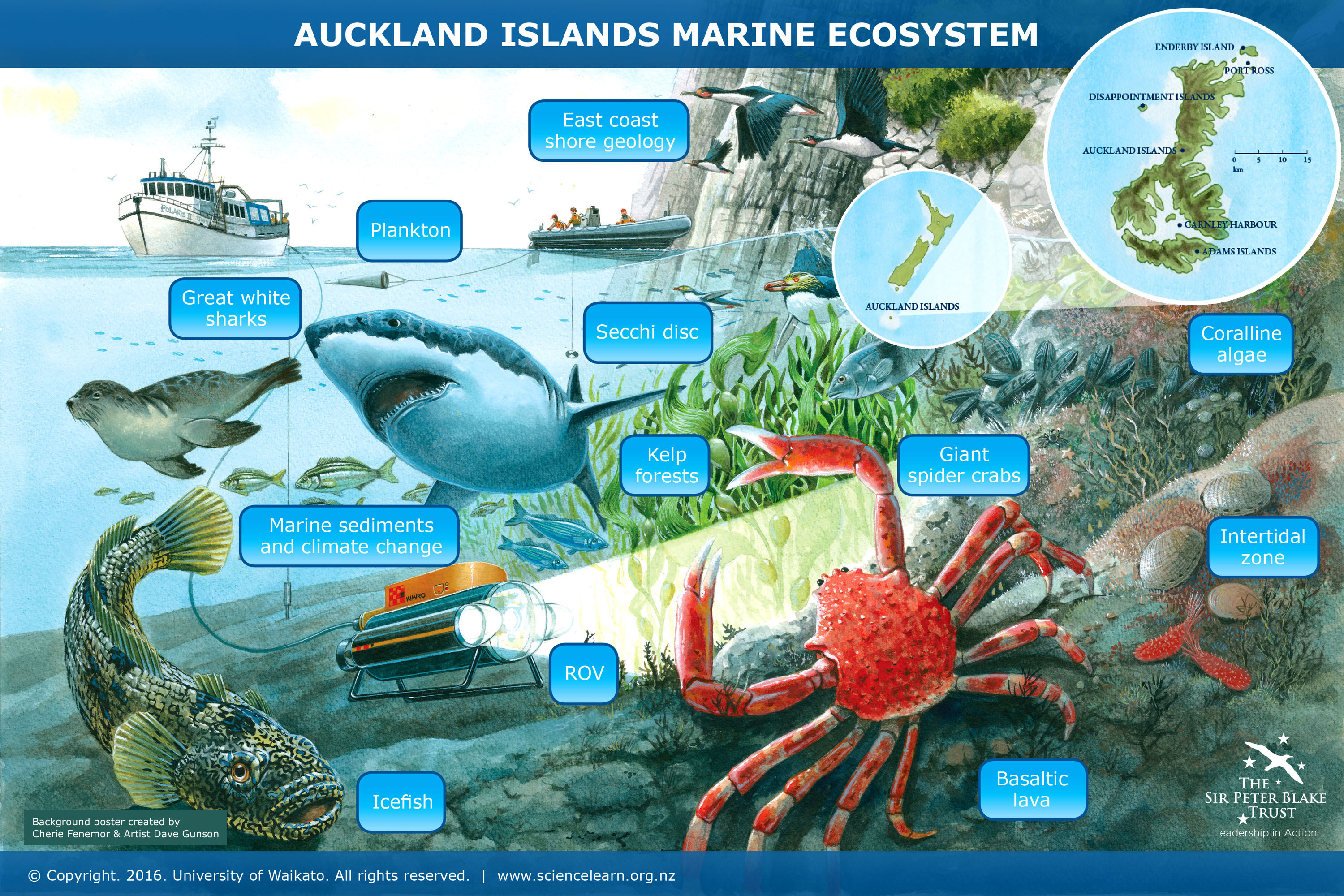
pH Levels and Chemical Composition
The pH level and chemical composition of seawater are vital abiotic factors that influence the marine ecosystem. These elements affect the solubility and availability of nutrients, the health of marine organisms, and the integrity of habitats such as coral reefs.
- pH Levels: The ocean"s pH level, a measure of acidity, has been gradually decreasing due to increased CO2 absorption from the atmosphere, leading to ocean acidification. This affects calcifying organisms like corals and shellfish, which rely on carbonate ions to build their shells and skeletons.
- Chemical Composition: Seawater contains a complex mixture of ions, including sodium, chloride, sulfate, magnesium, calcium, and potassium, which play crucial roles in the physiological processes of marine life, such as osmoregulation and cellular function.
Changes in the chemical composition of seawater can have far-reaching impacts on marine ecosystems, altering food webs, species distribution, and the resilience of marine populations to environmental stressors.
- Trace Elements: Essential for marine life, trace elements like iron, manganese, and zinc serve as nutrients that support the growth of phytoplankton and other marine organisms.
- Impact of Human Activities: Pollution and runoff can introduce harmful chemicals and heavy metals into marine ecosystems, affecting the health and diversity of marine life.
Monitoring and managing pH levels and chemical composition are critical for preserving marine biodiversity, protecting coral reefs, and ensuring the sustainability of marine resources.
Impact of Abiotic Factors on Marine Biodiversity
Abiotic factors play a crucial role in shaping marine biodiversity, influencing the distribution, behavior, and survival of marine organisms. These non-living components of the ecosystem create the environmental conditions under which marine life can thrive or face challenges.
- Temperature and Light: Regulate biological processes and affect the geographic distribution of species. Warmer waters support high biodiversity, particularly in coral reefs, while colder regions are inhabited by species adapted to extreme conditions.
- Salinity: Determines the osmotic balance of marine organisms, affecting species composition in estuarine and open ocean environments. Variations in salinity can lead to unique ecological niches and biodiversity.
- Oxygen Concentration: Essential for aerobic respiration, oxygen availability influences the density and diversity of life, especially in areas affected by hypoxia or anoxia.
- Water Movement and Currents: Facilitate the dispersal of larvae and the distribution of nutrients, enabling diverse ecosystems to develop from coral reefs to the deep sea.
- Depth and Pressure: Create distinct habitats, from shallow coastal waters to the abyssal plains and trenches, each supporting unique communities adapted to these conditions.
- Nutrient Availability: Drives the productivity of marine ecosystems, supporting food webs that sustain a diverse array of marine species.
- pH Levels and Chemical Composition: Affect the solubility of minerals and the health of marine organisms, with ocean acidification posing a significant threat to calcifying species.
The interplay of these abiotic factors ensures the marine ecosystem"s complexity and resilience, supporting a wide range of habitats and species. However, changes in these factors due to natural variability or human influence can have profound impacts on marine biodiversity, highlighting the need for careful monitoring and conservation efforts.

READ MORE:
Role in Marine Ecosystem Health and Productivity
Abiotic factors are foundational to the health and productivity of marine ecosystems, driving the biogeochemical cycles and energy flows that underpin the ocean"s biodiversity. These factors influence not only the immediate living conditions of marine organisms but also the overall functioning and resilience of marine habitats.
- Temperature: Influences metabolic rates and seasonal migrations, affecting reproductive cycles and the availability of food resources.
- Light: Fuels photosynthesis, the primary source of energy production in the marine food web, supporting ecosystems from the surface to the deep sea.
- Salinity: Affects the balance of marine life, with specific species adapted to varying salinity levels, contributing to the diversity of marine ecosystems.
- Oxygen: Vital for respiration, its distribution shapes the habitats that can support aerobic life, impacting species diversity and productivity.
- Water Movement: Distributes nutrients and larvae, supports phytoplankton growth, and facilitates the dynamic exchange between ecosystems.
- Depth and Pressure: Define the boundaries of different marine zones, each with unique species adapted to those conditions, contributing to the vertical stratification of life in the ocean.
- Nutrient Availability: Directly correlates with the primary productivity of an ecosystem, influencing the abundance and distribution of both plant and animal life in the ocean.
- pH Levels: Critical for maintaining the chemical balance necessary for the health of marine organisms, particularly those building calcium carbonate structures.
Together, these abiotic factors ensure the productivity and sustainability of marine ecosystems. They regulate processes from primary production to nutrient cycling, supporting a complex web of life that includes everything from microscopic phytoplankton to large marine mammals. Changes in these abiotic factors, whether through natural processes or human activities, can significantly affect the marine ecosystem"s health, highlighting the importance of understanding and preserving these foundational elements.
Understanding abiotic factors in the marine ecosystem unlocks the secrets to preserving our oceans" health and diversity. These foundational elements guide conservation efforts and ensure the vitality of marine life for future generations.



